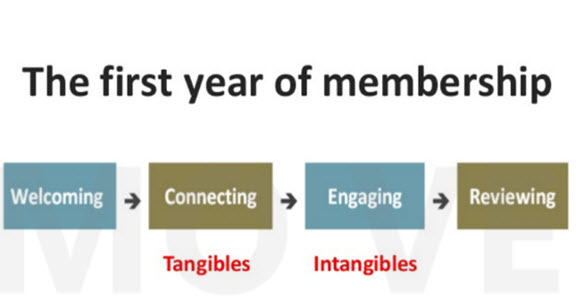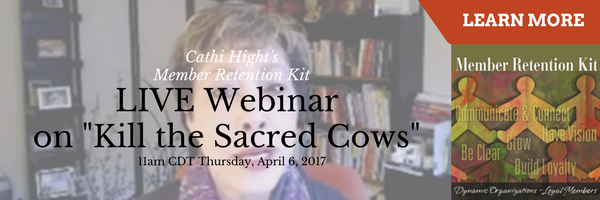Let’s admit it: When we recruit new members, we anticipate they will jump right in and get involved, join in our advocacy efforts, and quickly realize the value that comes with membership. We expect they will take responsibility for driving value to them and their businesses. And over time, they will spend more time and money with our organization. After all, membership is a symbiotic relationship and win-win for us all, right?
After observing and sometimes commenting on social media posts about why members don’t see value or feel valued, I decided to weigh in for the members. I hate to say this, but it’s true. It’s not about you.
The Experience is in the Eye of the Member
Most members don’t really know about your organization, what you do for the community/industry and how you serve them. New members will judge their initial year based on their experiences and well you delivered on why they joined in the first place. Whether you met their expectations and delivered a meaningful impact will determine whether they come back for year two and three, and beyond. Welcome to the Experience Economy.
Every member is on a “journey” with you and it’s either delivering on your brand or sale promise, or it isn’t. So, you may be wondering, “What were they were hoping to gain by engaging with us?” And depending on the customer segment, that answer may be different for some members than for others.
Seeing Your Organization Through Customers’ Perspectives
Customer Journey Maps is a relatively new topic that’s been buzzing around the association industry. These “maps” tell stories of customers’ experiences and what it feels like to be prospects, new members, interacting with us, and the value they place on our relationships. Customer perspectives drive engagement, or not, and can result in long-term relationships or “one and done”s.
Developing Journey Maps for different segments can help you turn prospects into new members that engage and renew. Reading “Managing the Member Experience” inspired us to rethink and redesign how we engage with prospects and onboard our new members.

A Journey Map has common stages that describes the process that members experience. Our job is to envision what it’s like to be a member, our expectations for each stage, and to develop the experiences to meet those expectations. It requires us have empathy and to be in their “shoes”, ask the same questions, and then guide the process so our members have the positive outcomes that influence higher engagement and retention rates.
In my next blog post, “Mapping the 1st-Year Member Journey”, I’ll share examples of how other member-based organizations have used Journey Maps to anticipate the needs of new members and create onboarding processes that influence more of them to engage and renew.
Cathi Hight helps organizations manage constant change, deliver benefits that members value and effectively communicate the value of membership. She serves as the SVP of Growth Strategy and Investor Relations for the Greater Austin Chamber and is the President of Hight Performance Group. Cathi is the developer of The Member Retention Kit and A New Approach to Tiered Membership. Learn more at www.hightperformance.com.

